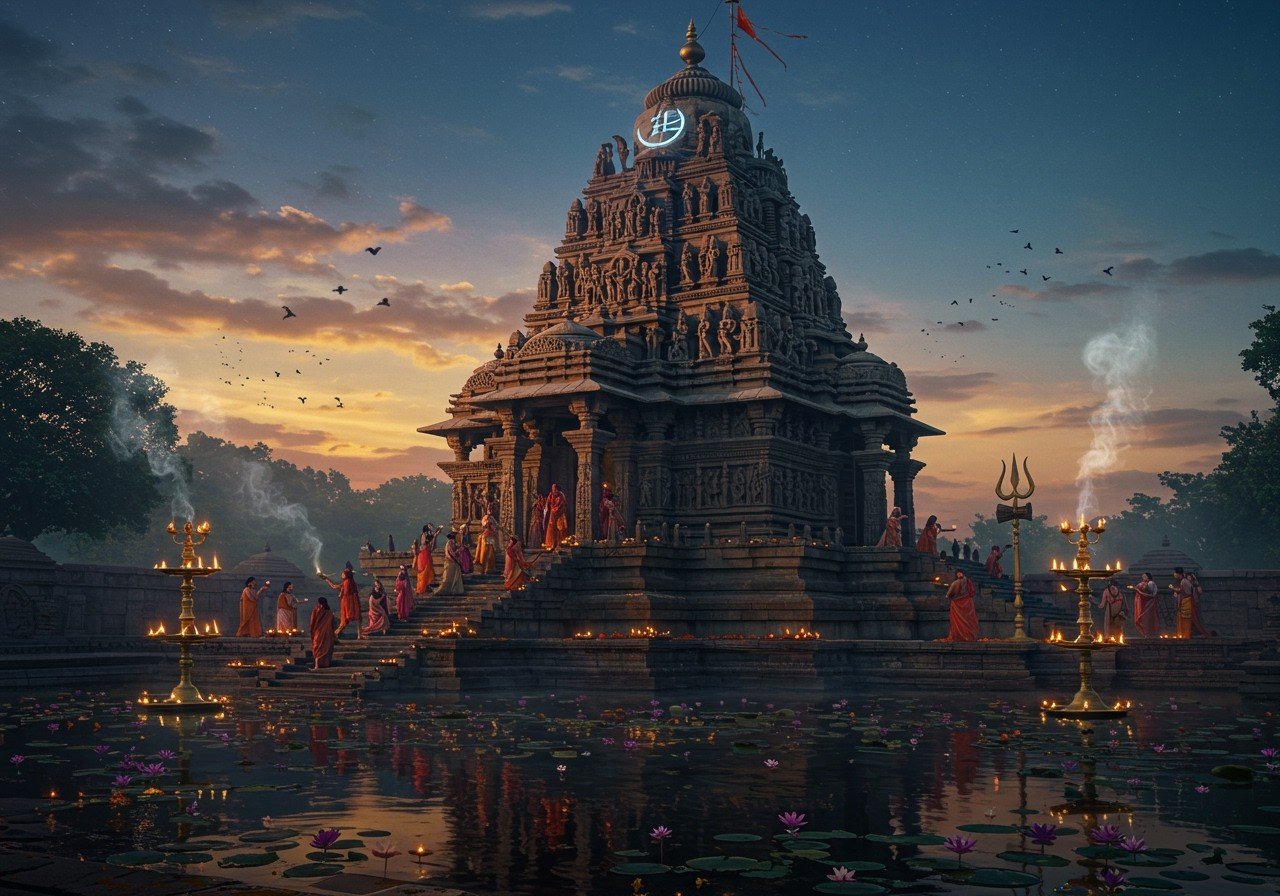
Nestled in the heart of Cooch Behar, West Bengal, the Baneswar Shiva Temple stands as a testament to the region’s rich spiritual heritage and architectural prowess. This ancient temple, dedicated to Lord Shiva, draws devotees and history enthusiasts alike, offering a glimpse into centuries of devotion and intricate artistry. This comprehensive guide explores the temple’s historical significance, cultural importance, and provides essential information for planning your visit.
Historical Background
The Baneswar Shiva Temple’s history is interwoven with the rich tapestry of Bengal’s past. While pinpointing the exact date of its origin remains a subject of ongoing research, historical accounts suggest a strong connection to the Koch dynasty, who ruled the region for centuries. Local legends and folklore add layers of mystique to the temple’s narrative, speaking to its enduring presence in the community’s collective memory. Over the years, restoration efforts have been undertaken to preserve the temple’s legacy for generations to come.
Cultural Significance
The Baneswar Shiva Temple holds deep spiritual and cultural importance for the people of Cooch Behar. As a revered shrine dedicated to Lord Shiva, it serves as a focal point for religious observances, particularly during festivals like Maha Shivaratri. The temple’s rituals and ceremonies reflect the region’s unique traditions, offering a window into the vibrant cultural fabric of Bengal. It stands not only as a place of worship but also as a community hub, fostering religious harmony and spiritual learning.
Architectural Marvels
Prepare to be mesmerized by the architectural splendor of the Baneswar Shiva Temple. The temple showcases the artistic finesse of ancient Bengal, with intricate carvings and sculptures adorning its structure. The materials used in its construction, often locally sourced, speak to the temple’s connection to the land. The layout adheres to traditional architectural principles, featuring a sanctum sanctorum (garbhagriha), a mandapa (assembly hall), and other key elements that create a sacred and harmonious space.
Visitor Information
Location: Cooch Behar, West Bengal
Accessibility: The temple is easily accessible by various modes of transportation within Cooch Behar.
Entry Fee: None
Best Time to Visit: The serene ambiance of the early morning or late evening hours offers an ideal setting for experiencing the temple’s spiritual atmosphere. Attending the aarti during these times is highly recommended. Favorable weather conditions further enhance the visit.
Nearby Attractions: Cooch Behar offers a range of attractions to explore, allowing visitors to combine their temple visit with other cultural and historical experiences. Consider exploring the Cooch Behar Palace, a magnificent example of Indo-Saracenic architecture, or immerse yourself in the natural beauty of the Madan Mohan Bari gardens.
Poojn.in Products: Enhance your spiritual journey by acquiring authentic puja items from Poojn.in. We offer a wide selection of high-quality products, including copper kalash, dhoop, incense, diyas, ghee, rudraksha malas, and more, delivered conveniently to your doorstep. Our pre-arranged puja kits and expert customer service ensure a seamless and enriching worship experience.
Reviews and Experiences
Visitors consistently share positive experiences from their visits to the Baneswar Shiva Temple. Many express a sense of tranquility and spiritual connection within the temple’s sacred walls. Others highlight the architectural beauty and intricate details that captivate the eye. The warm hospitality of the local community further enhances the overall experience, creating lasting memories for devotees and tourists alike.
Exploring Other Temples in the Region
While visiting Baneswar Shiva Temple, consider exploring other significant temples in the broader region. If you venture to Banswara, Rajasthan, you’ll find a diverse array of spiritual sites, including:
- Sai Baba Temple: Located on a hilltop, this temple features a marble idol of Shri Sai Baba, alongside statues of Nandi, Tortoise, and Ganesha.
- Anekant Bahubali Temple: This Jain temple is renowned for its impressive 27-foot standing statue of Lord Bahubali.
- Shree Tripura Sundari Temple: A renowned Shakti Peeth, this temple holds immense significance for devotees of the goddess Tripura Sundari.
- Brahma Temple: Situated near a tranquil lake, this temple houses a striking black stone statue of Lord Brahma and serves as a popular picnic spot.
Conclusion
The Baneswar Shiva Temple stands as a beacon of history, culture, and spirituality in Cooch Behar. Its architectural grandeur, coupled with its profound religious significance, makes it a must-visit destination. Whether you seek a deeper connection with your faith or wish to explore the artistic heritage of Bengal, the Baneswar Shiva Temple offers a truly enriching experience.
Creating a Sacred Home Puja Room
Essential Puja Samagri: A Guide


